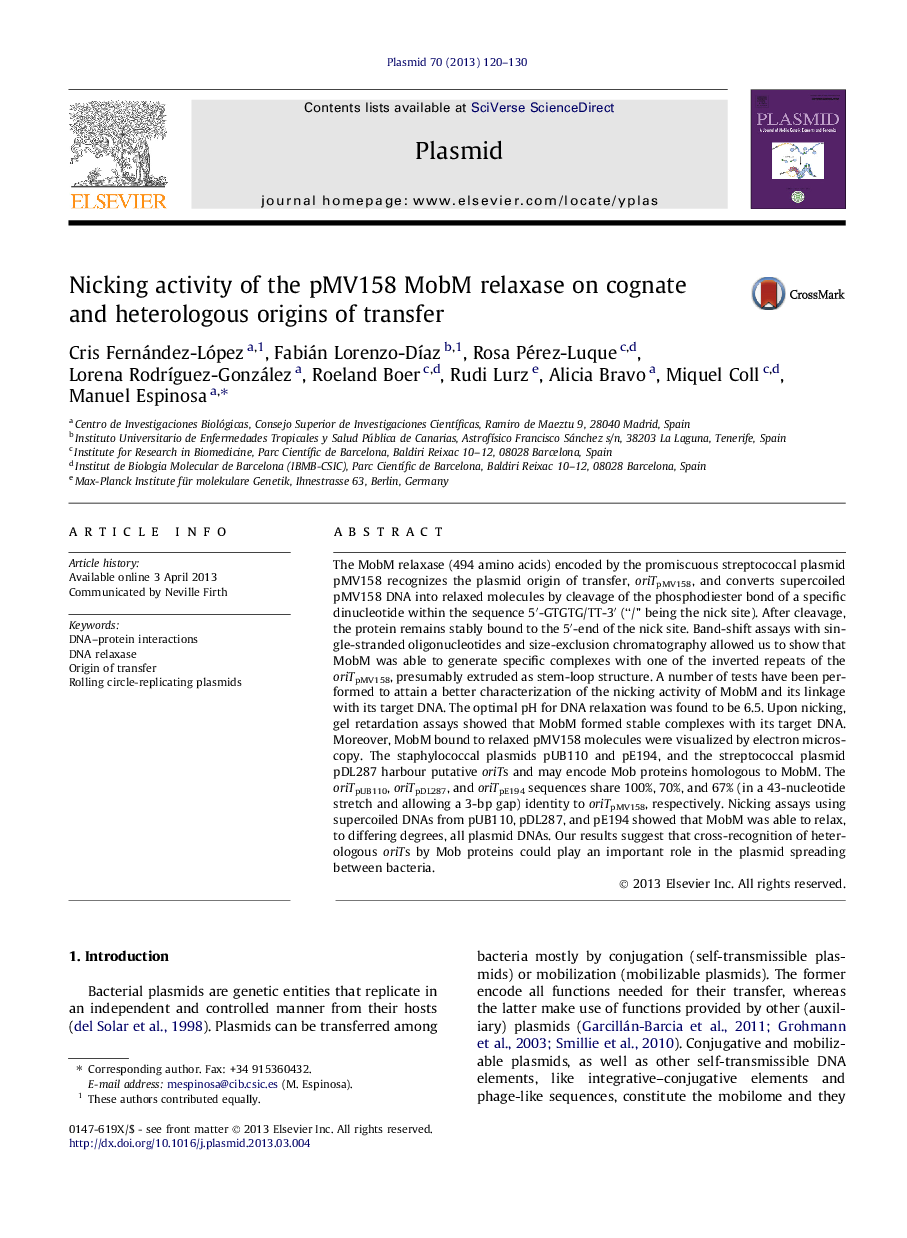| Article ID | Journal | Published Year | Pages | File Type |
|---|---|---|---|---|
| 2824155 | Plasmid | 2013 | 11 Pages |
•Here we present information on the features of the MobM relaxase encoded by the promiscuous plasmid pMV158.•The protein binds to oligonucleotides and to supercoiled plasmid DNA containing the origin of transfer.•MobM-relaxed pMV158 DNA forms could be visualized by electron microscopy.•MobM relaxed supercoiled DNA from plasmids with origins of transfer similar to the oriT of pMV158.
The MobM relaxase (494 amino acids) encoded by the promiscuous streptococcal plasmid pMV158 recognizes the plasmid origin of transfer, oriTpMV158, and converts supercoiled pMV158 DNA into relaxed molecules by cleavage of the phosphodiester bond of a specific dinucleotide within the sequence 5′-GTGTG/TT-3′ (“/” being the nick site). After cleavage, the protein remains stably bound to the 5′-end of the nick site. Band-shift assays with single-stranded oligonucleotides and size-exclusion chromatography allowed us to show that MobM was able to generate specific complexes with one of the inverted repeats of the oriTpMV158, presumably extruded as stem-loop structure. A number of tests have been performed to attain a better characterization of the nicking activity of MobM and its linkage with its target DNA. The optimal pH for DNA relaxation was found to be 6.5. Upon nicking, gel retardation assays showed that MobM formed stable complexes with its target DNA. Moreover, MobM bound to relaxed pMV158 molecules were visualized by electron microscopy. The staphylococcal plasmids pUB110 and pE194, and the streptococcal plasmid pDL287 harbour putative oriTs and may encode Mob proteins homologous to MobM. The oriTpUB110, oriTpDL287, and oriTpE194 sequences share 100%, 70%, and 67% (in a 43-nucleotide stretch and allowing a 3-bp gap) identity to oriTpMV158, respectively. Nicking assays using supercoiled DNAs from pUB110, pDL287, and pE194 showed that MobM was able to relax, to differing degrees, all plasmid DNAs. Our results suggest that cross-recognition of heterologous oriTs by Mob proteins could play an important role in the plasmid spreading between bacteria.
